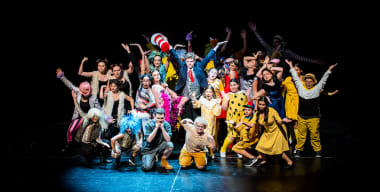Choosing a school for a conventional learner
Exploring a conventional learner's school fit
Kids vary widely in their learning styles. Don’t underestimate the importance of your child’s learning style on school choice: it can profoundly affect the kind of learning environment, and hence school, that’s right for them.
Conventional learners tend to prefer a traditional learning approach. This often includes whole-class lectures, teacher-led instruction, pre-planned units, plenty of structure, and objective modes of assessment (such as grades).
Below, we identify key points you should reflect on when considering 10 different school types for a conventional learner. Note: our aim isn’t to tell you whether a school type is right or wrong for you, but to highlight some critical factors you should consider when making your decision.
To learn about how to choose the right school in general, read the Our Kids’ step-by-step advice guide and our expert tips. To get school-choice advice customized to your child's unique traits, create a child profile through your user account and read our seven ways to choose a school based on your child's needs (i.e., overall fit, more academic challenge, social struggles, academic struggles, intensive learning interests, university preparation, and special needs.).
Conventional learners’ fit in 10 school types
On this page:
School size
Gender
Curriculum
Living arrangements
School size
Small school (150 students or less)
Some small schools, especially alternative ones, have smaller classes with a student-centred curriculum and an individualized approach to learning. While this benefits many kids, conventional learners often prefer a more traditional environment, with pre-planned units, teachers who deliver whole-class lectures, and lots of structure.
That said, many schools with smaller classes, especially those which offer individualized learning, have the flexibility to accommodate a wide range of learning styles. For instance, if your child prefers direct instruction, textbook-based learning, and graded work—as many conventional learners do—a small school may be able to offer these things.
Big school (151+ students)
Big schools vary in the classroom environments they offer. Size isn’t nearly as important as the teaching and learning approach that individual teachers use in meeting the needs of a conventional learner.
Here are some things to look for:
-
A traditional classroom setup (teacher at the front facing the students)
-
Whole-class lectures
-
Plenty of structure
-
Graded work and clear criteria for assessment
Conventional learners tend to do well in learning environments with all or most of these features. However, since learning preferences differ even among these students, ensure a school provides what your child needs.
Gender
Coed school
Conventional learners tend to prefer a traditional classroom, with teacher-led instruction, whole-class lectures, lots of structure, and objective forms of assessment (such as grades). Many coed schools provide these things, though not all do (and some provide only some of them).
You’ll need to ask specific questions to gauge your child’s fit at a coed school. Here are some key ones:
-
Do you have a traditional classroom setup?
-
Do you offer teacher-based instruction?
-
Do you have whole-class lectures?
-
How is each day structured?
-
How is student progress assessed?
However, since learning preferences differ even among conventional learners, make sure a school’s environment is specifically tailored to meet as many of your child’s needs as possible. For instance, while they may enjoy whole-class lectures and textbook learning, lots of graded work may not be a great fit for them.
Girls' school
Some girls’ schools cater to conventional learners, offering teacher-led instruction, textbook-based learning, and plenty of structure. Others, especially those with smaller classes, have a more student-focused teaching and learning approach, with lots of independent learning and group work.
To determine whether your daughter is likely to be a good fit, ask specific questions:
-
Do you provide whole-class lectures?
-
How much direct instruction do you offer?
-
Do girls learn at roughly the same pace?
-
How structured is the daily schedule and what does it look like?
Since preferences differ even among conventional learners, ensure a school’s curricular approach is tailored to meet your daughter’s unique learning needs. For instance, if she prefers textbook-based learning combined with some independent and group work, confirm whether this is offered.
Boys' school
Boys’ schools differ in their teaching and learning approaches. Some cater to conventional learners, offering teacher-led instruction, whole-class lectures, pre-planned units, plenty of structure. Others offer only some or (in rare cases) none of these things.
Some all-boys schools prioritize experiential learning—where kids learn more by doing than listening—and plenty of group work. These particular schools won’t work for some conventional learners—i.e., those who prefer more direct instruction and textbook learning. To gauge whether your son is likely to be a good fit, ask a school about its teaching and learning approach and whether (and to what extent) it emphasizes experiential and group learning.
Curriculum
Montessori school
Montessori schools’ decentralized, individualized learning environment often works well for unconventional learners. Many conventional learners, however, tend to prefer more whole-class lectures, teacher-led instruction, textbook learning, and graded work than Montessori schools tend to provide.
That said, since not all Montessori schools are alike, inquire about the learning environment and approach a school provides. For instance, ask if it offers whole-class lectures (and how often), direct instruction, and textbook learning.
Language immersion school
Most language immersion schools cater to conventional learners, offering plenty of structure, teacher-led instruction, and clear criteria for assessment. They also enable your child to work with peers who are often motivated and studious–an environment conventional learners can thrive in.
That said, for conventional learners who are less academically-focused, a language immersion program—which requires students to learn all or most subjects in a second language—can be taxing. This is especially true if languages aren’t a strength for your child.
Reggio Emilia school
Reggio Emilia schools’ decentralized, collaborative learning environment is often a nice fit for unconventional learners. Conventional learners, however, tend to prefer more teacher-led instruction, textbook learning, and structure than some Reggio Emilia schools provide. However, since different Reggio Emilia schools operate according to different principles, ask a school about its teaching and learning approach to assess your child’s fit.
Keep in mind, the Reggio Emilia classroom is set up to promote lots of interaction and group learning, which helps students engage more fully with their work. This tends to be a plus for all kinds of learners, including conventional ones.
International Baccalaureate school
IB schools offer a standardized, prescribed curriculum, with clear criteria for assessment, which can be ideal for conventional learners. They also provide a nice balance of group and independent learning, delivered through rigorous courses, which can help conventional (and unconventional) learners really engage with their studies.
That said, IB schools tend to have plenty of reflection, exploration, and diverse experiences. They encourage students to look at questions and issues from many viewpoints, and they have long projects and extended essays. Conventional learners who are type-A students (i.e., who are intensively academically-focused) often prefer to move through the curriculum more quickly, rather than spend so much time reflecting about various sides of an issue.
Living arrangements
Boarding school
Boarding schools can be a nice fit for conventional learners, who tend to prefer whole-class lectures, direct instruction, textbook-based learning, and graded work. While some boarding schools offer more alternative approaches—e.g., student-centred, inquiry-based, and individualized learning—these are more the exception than the rule. Asked detailed questions about a school’s teaching approach to ensure your child’s academic needs will be met, bearing in mind that learning preferences vary even among conventional learners.
Conventional learners’ school fit: key take-homes
- Big and small schools vary in the kind of learning environments they provide. Look for schools with teacher-directed instruction, whole-class lectures, preplanned units, plenty of structure, and clear criteria for assessment.
- Many coed schools provide conventional learning environments and approaches. Since boys’ and girls’ schools vary in their approaches, ask specific questions to gauge whether your child is the right fit.
- Boarding schools can be a nice fit for conventional learners, who tend to prefer whole-class lectures, direct instruction, textbook-based learning, and graded work.
- Montessori and Reggio Emilia schools’ decentralized, individualized learning environments are sometimes a better fit for unconventional learners than conventional learners.
- IB schools offer a standardized, prescribed curriculum, with clear criteria for assessment, which can be ideal for conventional learners.
- Most language immersion schools cater to conventional learners, offering plenty of structure, teacher-led instruction, and clear criteria for assessment.









